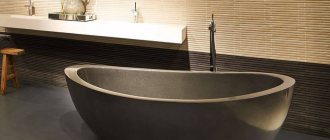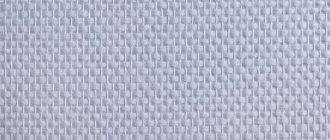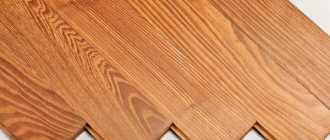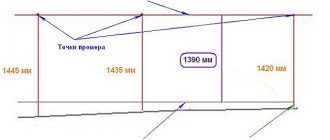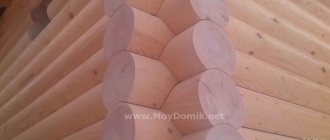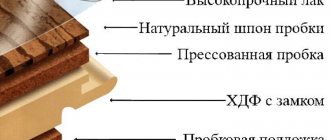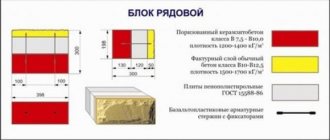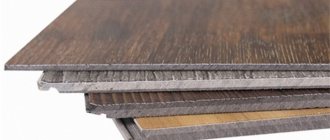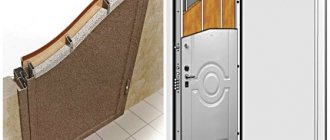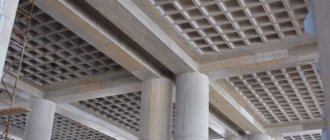Not so long ago, wall-hung toilets appeared in the bathrooms of our compatriots. In foreign homes, this plumbing innovation has already gained popularity and found its niche in the field of interior items that help save useful space and time for cleaning. Let's take a closer look at all the advantages and disadvantages of such a purchase, learn about the pitfalls of toilets with installations and how to choose the ideal model for your interior.
Advantages and disadvantages of a wall-hung toilet
The modern built-in version of the toilet has a practical design, as well as a number of undeniable advantages compared to traditional plumbing fixtures:
- the drain tank is carefully disguised in the wall surface, and the presence of a heat-insulating layer serves as effective protection against the accumulation of condensate;
- the functioning of the cistern is almost completely silent, which is due to the soundproofing properties of the wall;
- the built-in design is characterized by significant space savings, which is especially important when installed in small bathrooms;
- the installation of all communications will not require the destruction and dismantling of building structures;
- built-in models can be easily and quickly installed independently, which allows you to significantly save money and do without the involvement of highly paid craftsmen;
- the installed structure is conveniently adjustable in height and depth, which is important if the bathroom has a non-standard layout;
- to carry out maintenance and repair of internal components, the design provides simple and convenient access through special openings;
- A wide selection of models with a variety of colors and shapes makes it very easy to purchase a plumbing fixture that will ideally suit the style of the interior.
Stylish wall-hung toilet and sink
Traditional toilets installed on the floor surface do not allow for full tiling. Plumbing units that are equipped with built-in appliances are completely free of this problem. Among other things, the process of cleaning the room is greatly simplified.
The only drawback of built-in toilet models is their fairly high price, but the ease of installation, aesthetics and comfort of use of such a modern plumbing fixture are certainly worth it.
Wall cabinets
A universal option that is presented in any store. The dimensions allow the module to fit even into a miniature space and hang it behind the toilet at the desired height.
Mirrored doors create a deceptive effect of extending the room. However, fingerprints remain on the surface, which must be constantly removed - the main disadvantage of this model.
The matte surface perfectly camouflages objects. During operation, you will not have to clean the inside of the cabinet every day.
The lighting and black tint make the cabinet weightless, its outline literally disappears into the room.
Bright toilet interior. Color accents include red painted roller shutters, plumbing boxes and photo frames.
Photo
Round toilet
Black toilet
Wall-hung toilet with installation
Attached toilet with built-in hidden cistern
Installation of installation on a sink
Correct placement and firm fastening are the main rules when installing a wall-hung sink, so first, use a ruler and pencil to determine the location of the system.
Step-by-step installation instructions:
- The line where the sink meets the wall is marked and checked with a level. Marking points for fastening are fixed with a pencil.
- Using a drill, holes are drilled in the marked places. Dowels are inserted; they are practical and reliable for fastening heavy plumbing fixtures.
- Long studs are installed according to the diagram in the user manual.
- A mixer is mounted on the sink. Flexible hoses are connected.
- A sealing lubricant that ensures fastening is applied to the back surface of the sink.
- A washbasin is hung over the studs with sealing inserts.
- A siphon is connected to the sink and sewerage system, and flexible hoses are connected to the cold water and hot water pipes.
After installation, the horizontal level is checked. At the end of the work, you need to make sure that the water flows smoothly and that the sink is convenient for use.
Materials
Toilets built into the wall are made using a variety of materials, differing in technical characteristics and appearance, which affects the final cost of the plumbing fixture:
- Earthenware models are deservedly popular and widespread in our country. The main advantage of this traditional design is its affordable cost, but the high level of porosity of the material can complicate the cleaning process. It is for this reason that it is recommended to purchase models with a special, modern dirt-repellent coating.
- Porcelain models, characterized by a smoother and easier-to-clean surface, are also produced not only in the classic monochromatic version, but also with a pattern or ornament. The most noticeable disadvantage of porcelain plumbing fixtures can only be attributed to the high price.
- Steel models , favorably distinguished by their original appearance, are easy to clean and very resistant to mechanical damage. Despite the rather high cost, such toilets are most often used when arranging a plumbing unit in a modern high-tech style.
Wall-hung toilet with hidden cistern
Plastic models are currently the best option for installation in suburban households, due to their small dimensions, affordable cost, ease of installation and ease of use.
Glass construction is the most impractical, fragile and expensive, but this option has recently been increasingly used by many designers when decorating the plumbing facilities of private households.
How to choose an installation
When planning a bathroom renovation, you need to understand the structure and design features in advance.
A suitable option is to purchase it complete with a toilet. Items purchased separately must be compatible with each other.
For the toilet
When installing the installation, take into account the materials used in the production of plumbing fixtures:
- glass;
- ceramics;
- polymer mixtures;
- fake diamond.
Ceramic bowls are considered a traditional choice and are more commonly installed. The sanitary ware is resistant to cleaning agents and is durable.
Before purchasing the installation and toilet, take into account the following details:
- Type of wall for installation of the structure. Any model can be selected for mounting on a load-bearing partition. A frame with legs is suitable for installation on a wall made of fragile materials.
- A bowl purchased separately from the structure will still fit because there are several holes in the frame.
- Soundproofing gaskets will ensure that you do not hear the noise of water entering the tank.
- It is better to purchase the drain button separately, because you can choose any one to suit your taste.
- Purchasing spare parts will make it easy to replace them if they break down.
For the sink
Washbasin systems differ in the installation method and are:
- Floor-mounted - equipped with fasteners for fastening to the floor.
- Wall-mounted configurations are installed on a solid wall or rigid partition.
Types of structures are distinguished by type of mixer:
- the classic one involves installing a sink with a built-in faucet;
- placement option when the installation corners are located at the top - a frame is needed for a wall-mounted mixer;
- installation without connection parts is installed more often and allows installation in a convenient location.
Common dimensions of a sink frame: height 35-130 cm, width 35-50 cm, depth 7.5 cm.
Types of cisterns
All drain tanks produced today differ in the location and method of installing the equipment. The main types are presented:
- An autonomous or “top” flush cistern, located on the top of the wall and connected to the toilet structure via a special pipe. Flushing is carried out by pulling the chain, which activates the mechanical part of the flush tank.
- A cistern equipped with a “compact toilet” and located on a specially equipped shelf, which is part of the toilet bowl. Flushing occurs when a special button is pressed or when a lever device is acted upon.
Compact toilet Rosa Orion Lux
Particularly convenient are built-in flush cisterns, which most often complement wall-hung toilet models, but are quite suitable for connecting to floor-standing attached models. This type of cistern is masked by a wall (built-in toilet cistern), so the structure is completely invisible, with the exception of the flush button.
The most modern and cost-effective models of built-in flush cisterns are equipped with two buttons that allow partial and complete drainage.
Baths with hydromassage are, perhaps, preferred by everyone. But massage is not for everyone, and you need to be aware of this. Hydromassage baths - benefits and harm to human health, the topic of this article.
We will consider the design options and rules for installing a floor-standing bidet here.
The design and principle of operation of a wall-hung toilet with a bidet function will be discussed in this article.
Open niches
In this case, the niche performs a decorative function. The relief of the uneven surface and the contour of the recess are emphasized by spot lighting.
Diversity in a monochrome interior is achieved through the play of light. Volumetric decor fills the recess in the wall and casts interesting shadows.
An open niche laconically complements the minimalism in space.
Shape and type of bowl
The correct choice of shape, as well as the type of bowl of a sanitary fixture, guarantees ease of installation and operation of the sanitary fixture. Modern built-in toilets may have:
- standard oval bowl;
- square or rectangular bowl;
- round bowl.
A toilet with a standard or traditional bowl shape is the best option for installation in a restroom, regardless of the stylistic design decision.
Toilet built into the wall
Depending on the appearance, a built-in toilet can be presented as:
- a plate-shaped bowl with a small platform inside, which prevents strong splashing, but is not optimal in terms of hygiene;
- a funnel-shaped bowl in which the drain hole is located in the central part, which makes operation as convenient as possible;
- a visor bowl, with a drain hole located to the side and protected by a bend.
The latest design option for the drain bowl is considered to be the most optimal today, since this model most successfully combines the advantages of a plate-shaped and funnel-shaped shape.
When choosing the shape, type and size of the bowl, you need to remember that the plumbing fixture should be easy to use for all family members.
Other options
Wicker baskets are suitable not only for towels: your cat will appreciate such a house. If in principle it doesn’t bother you that she will watch you.
The geometry of the room gives ideas for design. In this case, open shelves are not only useful for household purposes, they also visually straighten the wall behind the toilet (suitable for crooked walls!).
Combined option - open and closed shelves.
A mirror-cabinet allows you to use the wall space to the maximum functionally.
The problem is not solved? See: Best Ways to Hide Pipes in a Toilet
Price
The average cost of built-in plumbing fixtures can vary greatly depending on the pricing policy of the manufacturer, the material used in the manufacture, as well as design features. For example:
- IFO toilet from a popular Swedish manufacturer, made of sanitary porcelain, white - about 15-30 thousand rubles;
- toilet bowl Am.Pm Bliss, produced by a joint manufacturer Germany-Italy, made of sanitary porcelain, white - about 10.5 thousand rubles;
- Rosa Mateo toilet from a Spanish manufacturer, made of sanitary porcelain, white - from 2.5 thousand rubles;
- Cezares Prati toilet, produced by an Italian manufacturer, made of sanitary porcelain, white - about 9.5 thousand rubles;
- Jacob Delafon Patio toilet, from a French manufacturer, made of sanitary porcelain, white - about 5.5 thousand rubles.
Is it possible to install a separate bidet? An electronic bidet lid is a good alternative option for cramped bathrooms.
We will consider the types and characteristics of toilets with a bidet function in this article.
Built-in toilets are now an ideal option for installation in rooms decorated in a minimalist style.
Such plumbing fixtures are easy to maintain, allow you to install a “warm floor” system under tiles in the bathroom, and are also distinguished by their aesthetics and ease of use.
Original bidet products
Even those owners of private real estate who realize the benefits of having a bidet in their apartment often do not have the opportunity to install these types of plumbing fixtures. The main reason is lack of space. In such cases, a real find will be the original designs of wall-hung toilets with bidets.
In appearance, the product differs from a conventional wall-hung toilet in that it has a longer bowl and a slightly larger tank. This is where the electronic heating device and other necessary mechanisms are installed. Such products contain a special fitting or nozzle that is pulled forward before direct use.
With the help of this type of toilet, you can confidently save space in bathrooms and improve the quality of hygiene. Product tanks are hidden behind modern installations. Metal frames for fastening structures can withstand loads of up to 400 kg. The pressure level and water temperature can be adjusted manually. An important nuance during installation is the correct connection of the wall-hung shower toilet to the electrical network.
Briefly about the features of the repair
There is no need to dismantle the partition and remove the cladding if the installation is damaged, because the parts are easily removed and replaced.
Design faults and causes:
- tank leakage - defective bottom valve;
- the drain tank is not filled - the filter is clogged;
- the tank fills continuously - the gasket is leaking;
- damage to the drainage system - incorrect choice of disinfectant.
The hole in the drain button allows you to:
- shut off the water;
- repair fasteners and communications.
